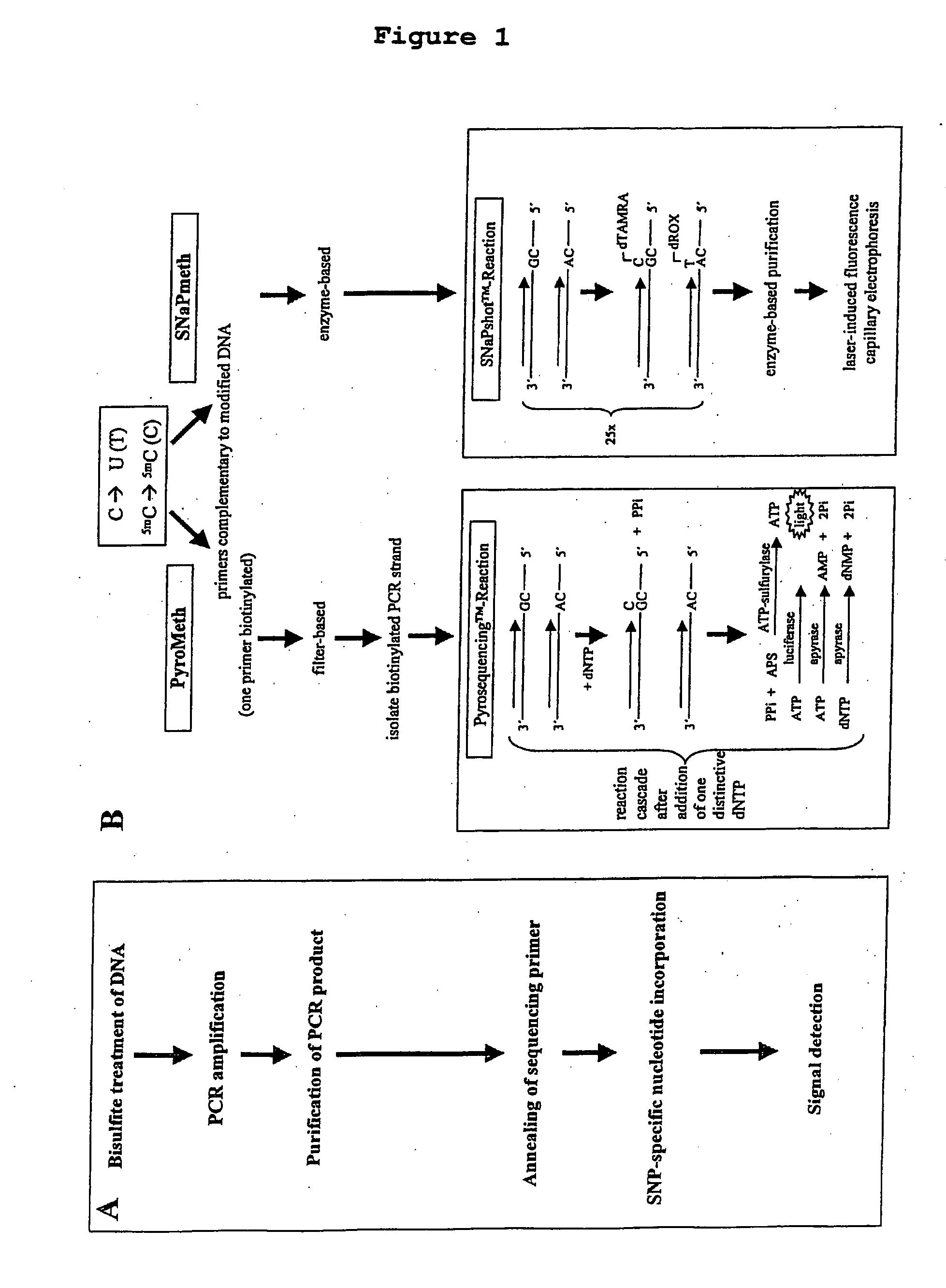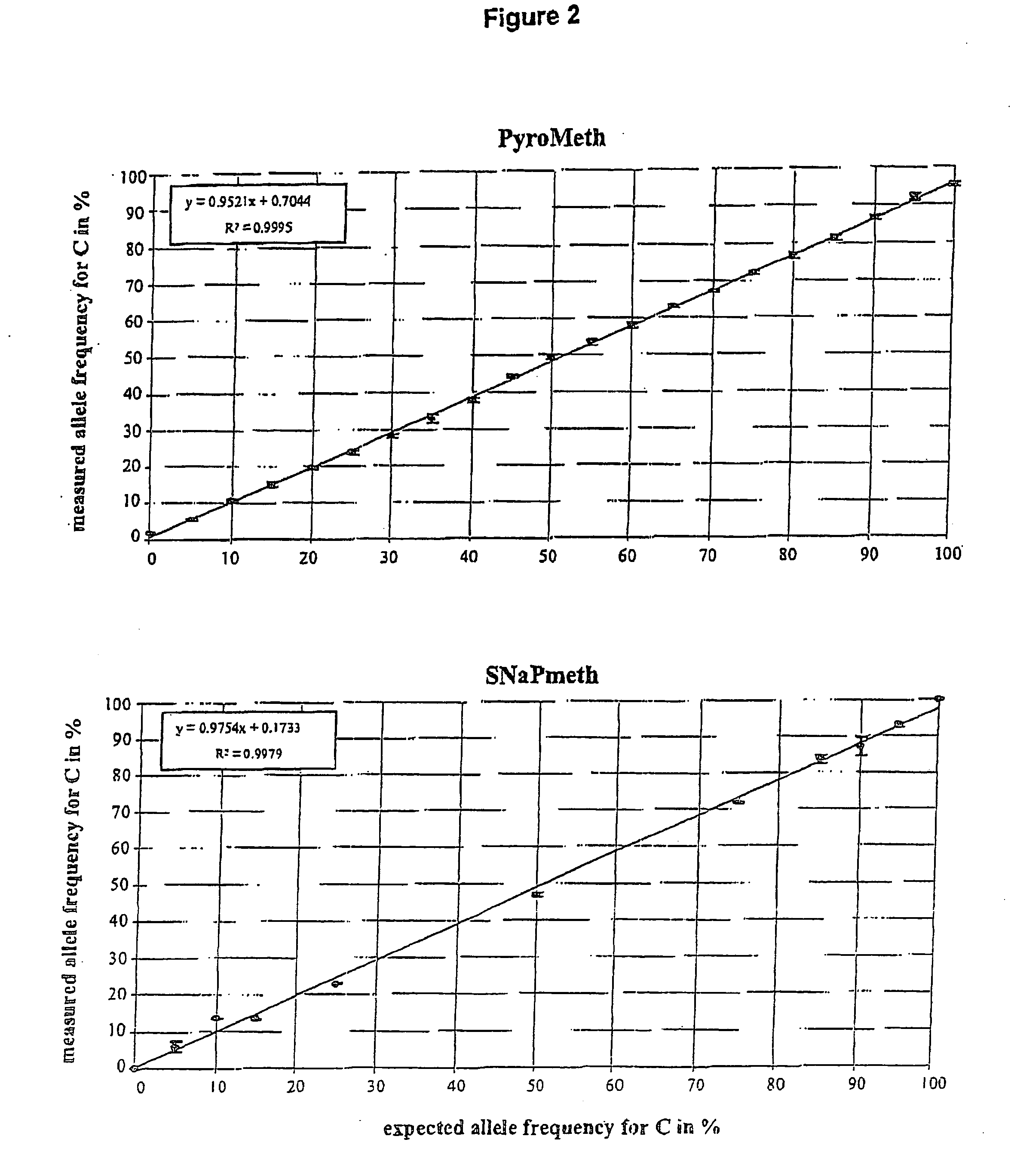Method of detecting epigenetic biomarkers by quantitative methyISNP analysis
a biomarker and quantitative technology, applied in the field of quantitative methyisnp analysis for detecting epigenetic biomarkers, can solve the problems of low sensitivity and/or the high consumption of time and labor of current protocols, limited study of methylation, and low throughput, so as to achieve higher methylation and lower methylation.
- Summary
- Abstract
- Description
- Claims
- Application Information
AI Technical Summary
Benefits of technology
Problems solved by technology
Method used
Image
Examples
example
1 Materials and Methods
1.1 Patient Samples
[0069] This study included 97 primary tumor samples, distributed as follows: 32 pilocytic astrocytomas (range 2-35 years, 18 male, 14 female), 29 astrocytomas grade II (range 9-54 years, 12 male, 17 female), 10 astrocytomas grade III (range 3-67 years, 4 male, 6 female), 6 astrocytomas grade IV (range 10-71 years, 3 male, 3 females), 3 glioblastoma multiform (range 46-70 years, 2 male, I female), 7 oligoastrocytomas (range 20-63 years, 2 male, 5 female), 10 oligodendrogliomas (range 17-60 years, 3 male, 7 female). 33 control tissues derived from 9 healthy individuals (range 0.6-88 years, all male) from three parts of the brain, including cerebrum (C, n=9), cerebellum (Cl, n=8) and truncus cerebri (TC, n=15), as well as spinal cord (SC, n=I). Details of the individual patients and specimens are published elsewhere [12]. All tumour and control samples are derived from unrelated patients / individuals. The histological typing of the tissues w...
PUM
| Property | Measurement | Unit |
|---|---|---|
| Magnetism | aaaaa | aaaaa |
| Disorder | aaaaa | aaaaa |
Abstract
Description
Claims
Application Information
 Login to View More
Login to View More - R&D
- Intellectual Property
- Life Sciences
- Materials
- Tech Scout
- Unparalleled Data Quality
- Higher Quality Content
- 60% Fewer Hallucinations
Browse by: Latest US Patents, China's latest patents, Technical Efficacy Thesaurus, Application Domain, Technology Topic, Popular Technical Reports.
© 2025 PatSnap. All rights reserved.Legal|Privacy policy|Modern Slavery Act Transparency Statement|Sitemap|About US| Contact US: help@patsnap.com



